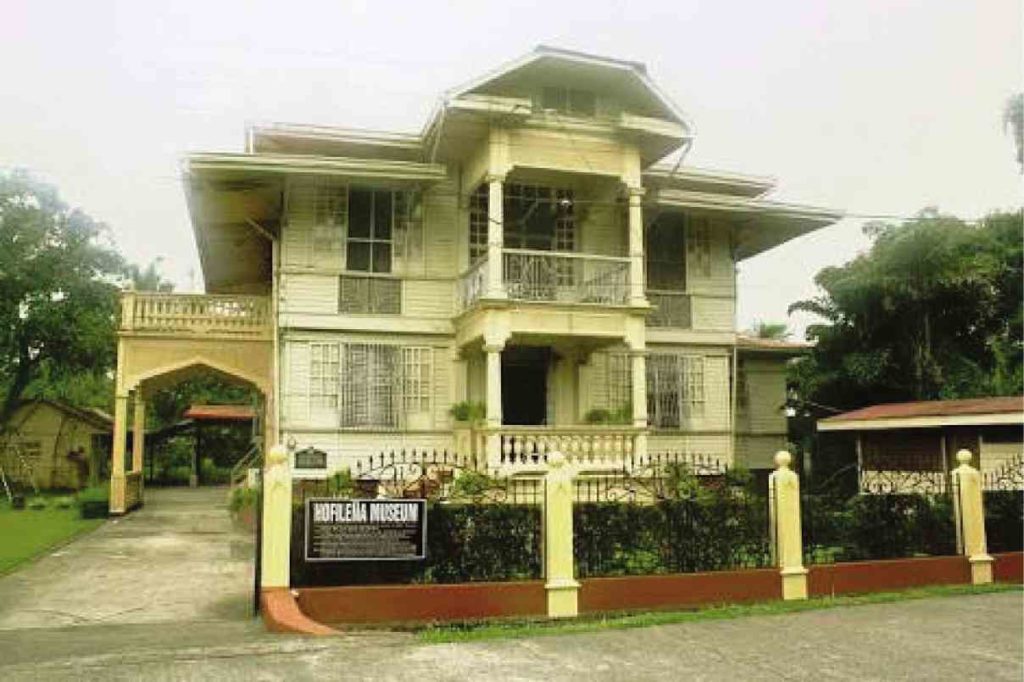The province of Negros Occidental bore witness to a period of affluence when Negros was the center of the Philippines’ sugarcane industry back in the late 1800s.
Hence, the sugar barons of the province enjoyed a great amount of wealth, and families of “hacienderos” demonstrated their fortune by building such beautiful ancestral homes.
Today, these houses, located in cities such as Bacolod, Silay, Talisay, have been transformed into museums, showcasing a historical period when prosperity was flowing from the sugar canes and into the houses of the privileged ones.
Silay City, in particular, was even dubbed as the “Paris of Negros” as it served as a hub for European artists and musicians during the Spanish era.
Most of the influential families played host to the likes of Jose Rizal, Juan Luna, and Felix Resurrecion Hidalgo, who once walked the hallways of these heritage homes. And if these walls can talk, one would be mesmerized by the tales of wonders and woes it could tell.
Many of these mansions are located near the church or the center of the city, as this was customary for many wealthy families in the Philippines in the olden days. Here are some of the finest heritage homes that can be found in Silay and Talisay.
Hofileña Ancestral House

Hofileña Ancestral House
First on the list is the Hofileña Ancestral House. Built in 1934 just a few steps from the corner of Cinco de Noviembre and Zamora Street is the home of Manuel Severino Hofilena.
Now, it has become a repository of the private art collection of Ramon H. Hofileña. His art collection is one of the finest in the country as it includes the works of Jose Rizal, Juan Luna, Felix Resurrecion Hidalgo, Manansala and H.R. Ocampo.
Photographs of the Hofileña family also adorn the walls of this house. This heritage house is now an ode to great talent of our Filipino artists who put the Philippines alongside the best and brightest in the world.
Balay Negrense
The Gaston Family built Balay Negrense in the 1900s. It is said that the ancestral mansion was built by Victor Fernandez Gaston, the son of Yves Leopold Germain Gaston of Lisiuex, France.
The Frenchman settled in Silay in 1837 and married Prudencia Fernandez of Balayan, Batangas. Victor’s father installed the first horno economico (steam run iron sugar mill) on the island, producing sugar in large quantities. He soon established a reputation for the quality of his export sugar. He was also credited to be the first to engage in sugar cultivation on a commercial level.
Balay Negrense was converted into a museum to showcase how sugar planters lived in the early part of the century. The 11 rooms have also been furnished as period bedrooms complete with canopied beds, Filipiniana costumes and accessories on display.
The house has been described as “a later and more airy version of the bahay na bato.” Visitors are greeted by a large foyer flanked by three bedrooms on each side, and a grand “imperial style” staircase, whose first single flight of steps rises to a half landing and then splits into two symmetrical flights.
Bernardino Jalandoni House
Bernardino Jalandoni House
The Bernardino Jalandoni House is better known as the “Pink House.” The residence of Don Bernardino Jalandoni and Doña Ysabel Lopez Ledesma who were originally from Jaro, Iloilo.
The Pink House depicts the typical opulent houses during early 20th century. It was declared a National Historical Landmark by the National Historical Institute in Nov. 6, 1993. This ancestral home based its design on the “nipa hut”—a stilt house used as a typical form of residence for most Filipinos.
Just like Balay Negrense, this house was turned into a museum to showcase high living during those times.
The Ruins
The Ruins is the most famous ancestral house in the province. The 903 sqm structure was built by Don Mariano Ledesma Lacson for his late Portuguese wife, Maria Braga Lacson.
In 1911, Maria, who was pregnant with their 11th child, slipped in the bathroom and bled to death, thus devastating Don Mariano. To prevent sinking further into depression, he embarked on a project to construct a house.
The mansion was made of the finest materials with A-grade concrete and oversized twisted bars. Don Mariano’s father-in-law was a captain of his own ship, so he carted to Talisay expensive items such as Machuca tiles and chinaware.
As proof of his unwavering love for his wife, Don Mariano had their initials molded on every post of the mansion.
When World War II broke out, the family hurriedly left the mansion. The United States Armed Forces in the Far East feared that the Japanese may use the house as their headquarters and so they decided to burn the house down.
After the fire, all that was left of the magnificent mansion were the pillars, the grand staircase, and parts of wooden floors on the second floor.
Indeed, all these ancestral homes were built out of love and a deep yearning from the hacienderos to give their families a comfortable place to live in.
Now, as spectators, we can only marvel that there exist a period in our history where affluent homes were made not only to house the wealthiest but to showcase the finest craftsmanship and artistry of the Filipino builder.

